The KANO method has long been used as a go-to approach for analyzing customer satisfaction and prioritizing product features. This method aims to identify features as Must-Haves, Satisfiers, and Delighters. However, the Kano approach for attaining these feature categories is often unreliable. In today’s rapidly evolving business landscape, it’s no longer the most effective tool. In this article, we introduce an alternative method to evaluating product features on multiple dimensions: Tandem MaxDiff.
Tandem MaxDiff is a research-backed and respondent-friendly approach that allows businesses to obtain deeper insights on customer preferences. With this approach, respondents complete a MaxDiff activity where they choose which features they find most important on two metrics, such as “desirability” and “necessity”. Hierarchical Bayesian modeling is then used to generate feature rankings on each dimension, making it easier for businesses to design more effective product development and marketing strategies. For example, by asking customers what features are “Desirable” and “Necessary”, we can identify Must-Haves, Satisfiers, and Delighters with a greater degree of statistical accuracy compared to the Kano method.
What’s great about Tandem MaxDiff is that it provides a more efficient and accurate approach to understanding customer needs. Our research has found that respondents had little difficulty completing the activity in a shorter amount of time, and they were more likely to finish the task when compared to traditional sequential MaxDiffs. Plus, Tandem MaxDiff successfully teases apart which attributes ranked highly on the two different dimensions, allowing businesses to prioritize features more effectively.
In conclusion, the KANO method may have been useful in the past, but Tandem MaxDiff is the way of the future. By adopting this approach, businesses can gain a deeper understanding of their customers, develop more effective product development and marketing strategies, and ultimately, build better products that meet their customers’ needs.


